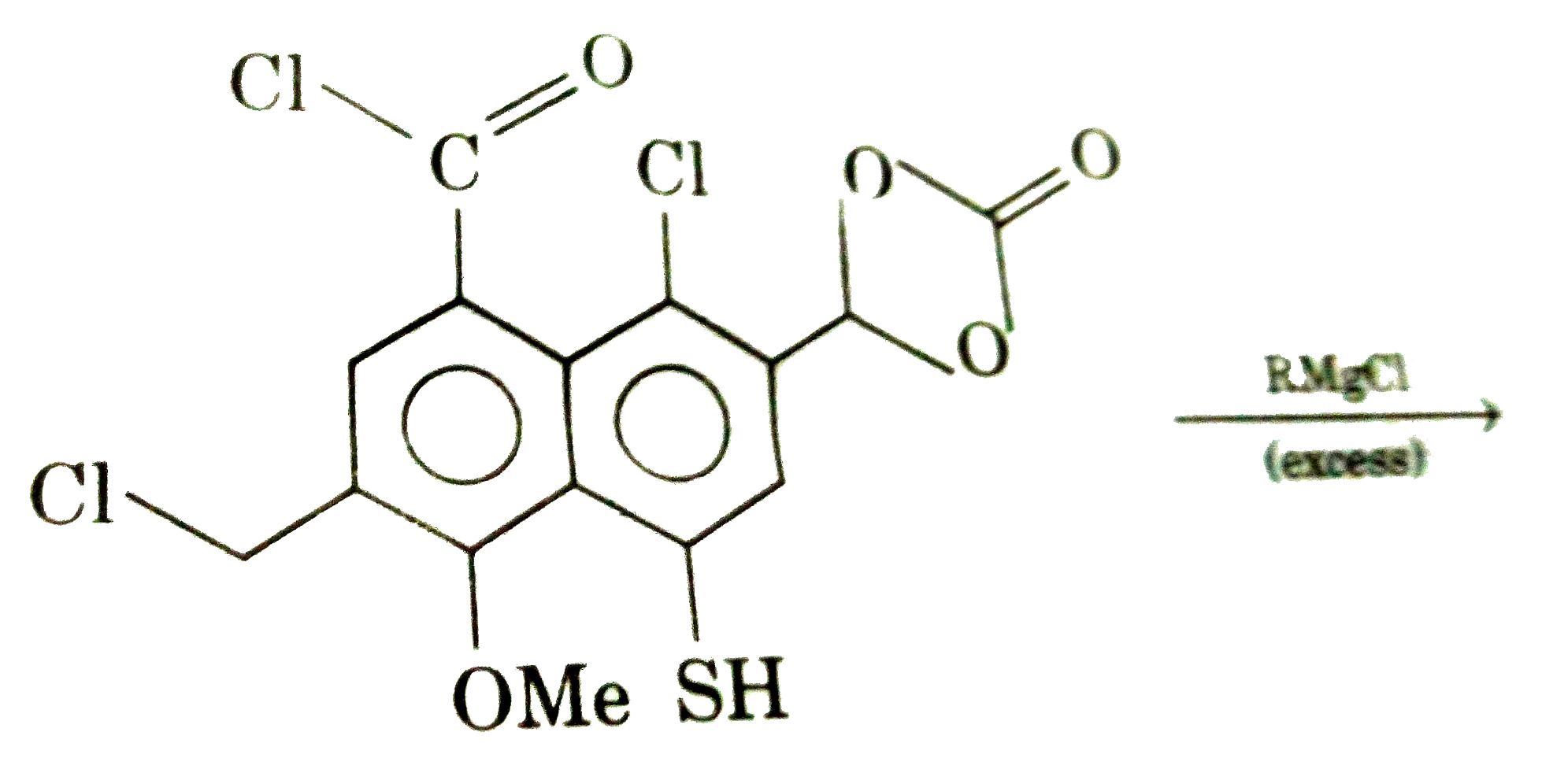A : Two moles of Grignard reagent is consumed in the formation of tertiary alcohol from ester following by hydrolysis .
R : One mole of Grignard reagent convert ester into Ketone and second mole of Grignard reagent adds to Ketone .
If both Assertion & Reason are true and the reason is the correct explanation of the assertion, then mark (1)
If both Assertion & Reason are true but the reason is not the correct explanation of the assertion, then mark (2)
If Assertion is true statement but Reason is false , then mark (3)
If both Assertion and Reason are false statements , then mark (4)
The correct Answer is:A
To solve the assertion and reason question regarding the formation of tertiary alcohol from an ester using Grignard reagents, we will analyze both the assertion (A) and the reason (R) step by step.
Step 1: Understanding the Assertion
The assertion states that "Two moles of Grignard reagent are consumed in the formation of tertiary alcohol from ester followed by hydrolysis."
1. Grignard Reagent and Ester Reaction: When a Grignard reagent (R''MgX) reacts with an ester (R'COOR), it first attacks the carbonyl carbon of the ester. This results in the formation of a tetrahedral intermediate.
2. Formation of Ketone: The first mole of Grignard reagent adds to the ester, resulting in a ketone (R'COR'') after the intermediate collapses.
3. Second Addition of Grignard Reagent: The second mole of Grignard reagent then attacks the ketone, leading to the formation of a tertiary alcohol after hydrolysis.
Step 2: Understanding the Reason
The reason states that "One mole of Grignard reagent converts ester into ketone and the second mole of Grignard reagent adds to the ketone."
1. First Mole of Grignard Reagent: The first mole indeed converts the ester into a ketone.
2. Second Mole of Grignard Reagent: The second mole adds to the ketone, resulting in the formation of a tertiary alcohol upon hydrolysis.
Step 3: Conclusion
Both the assertion and the reason are true. Furthermore, the reason provides a correct explanation for the assertion. Therefore, we conclude that both A and R are true, and R is the correct explanation of A.
Final Answer
Assertion (A) is true, and Reason (R) is true. R is the correct explanation of A.
---
The assertion states that "Two moles of Grignard reagent are consumed in the formation of tertiary alcohol from ester followed by hydrolysis."
2. Formation of Ketone: The first mole of Grignard reagent adds to the ester, resulting in a ketone (R'COR'') after the intermediate collapses.
3. Second Addition of Grignard Reagent: The second mole of Grignard reagent then attacks the ketone, leading to the formation of a tertiary alcohol after hydrolysis.
The reason states that "One mole of Grignard reagent converts ester into ketone and the second mole of Grignard reagent adds to the ketone."
2. Second Mole of Grignard Reagent: The second mole adds to the ketone, resulting in the formation of a tertiary alcohol upon hydrolysis.
Both the assertion and the reason are true. Furthermore, the reason provides a correct explanation for the assertion. Therefore, we conclude that both A and R are true, and R is the correct explanation of A.
Assertion (A) is true, and Reason (R) is true. R is the correct explanation of A.
Topper's Solved these Questions
- ALCOHOLS, PHENOLS AND ETHERSBOOK - AAKASH INSTITUTECHAPTER - ALCOHOLS, PHENOLS AND ETHERSEXERCISE - Assignment Section - C (Questions asked Prior to medical Ent. Exams. 2005)
13 Videos
- ALCOHOLS, PHENOLS AND ETHERS BOOK - AAKASH INSTITUTECHAPTER - ALCOHOLS, PHENOLS AND ETHERS EXERCISE - Try Yourself
5 Videos
Similar Questions
Knowledge Check
Grignard reagent adds to :
A>C=OB>C≡NC>C=SDAll of theseGrignard reagent adds to:
AC = OB−C≡NCC = SDAll of the aboveCleavage of Grignard reagent results in the formation of
Acarbonium ionBcarbanionCfree radicalDcarbene

Number of moles of Grignard reagent consumed per mol.
View SolutionThe number of moles of Grignard reagent comsumed per mol of the compound

View SolutionGrignard reagent adds to :
View Solution
Number of moles (x) of Grignard reagent consumed in the above reaction is :
View SolutionGrignard reagent on reaction with a ketone forms
View Solution